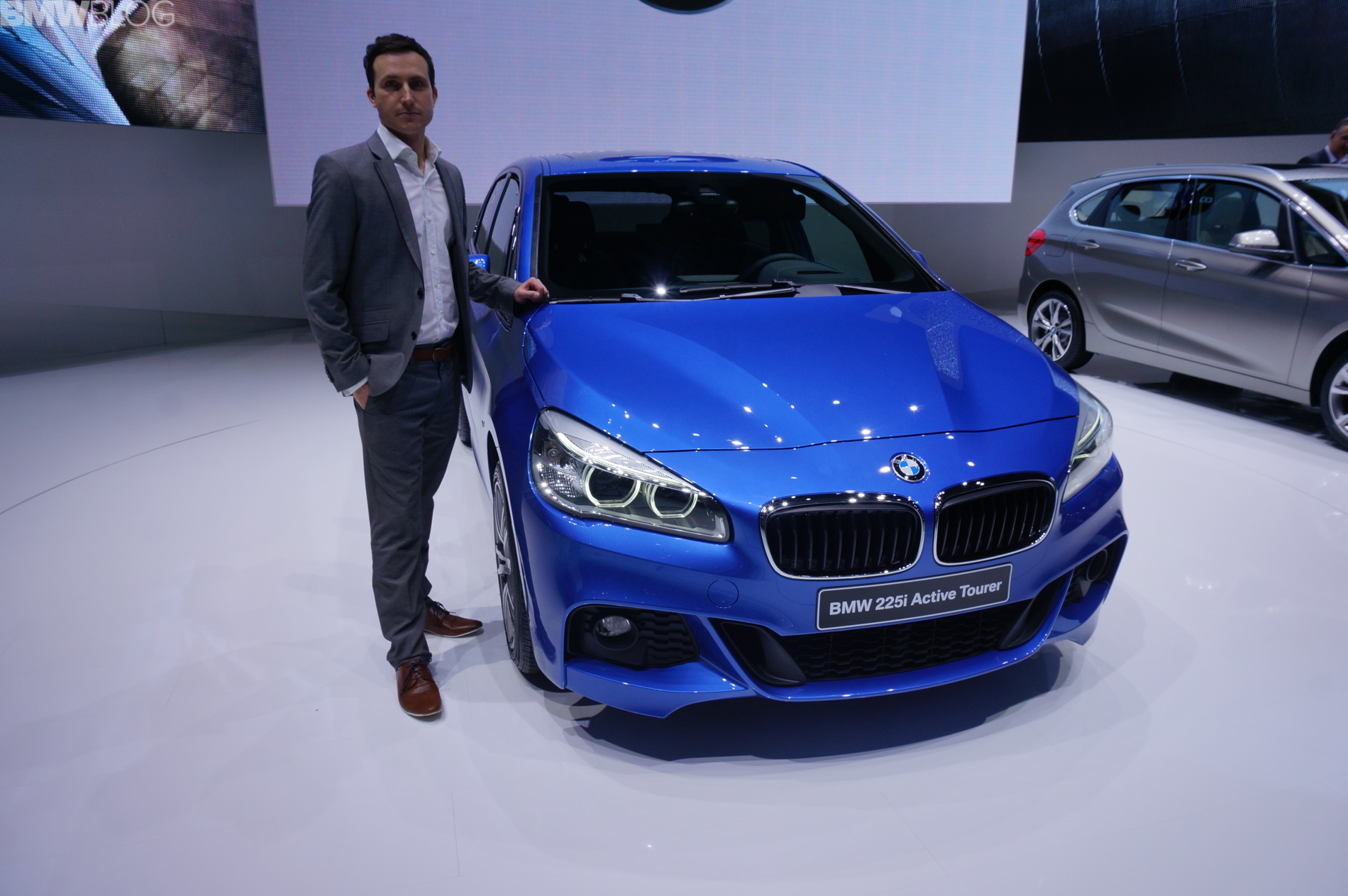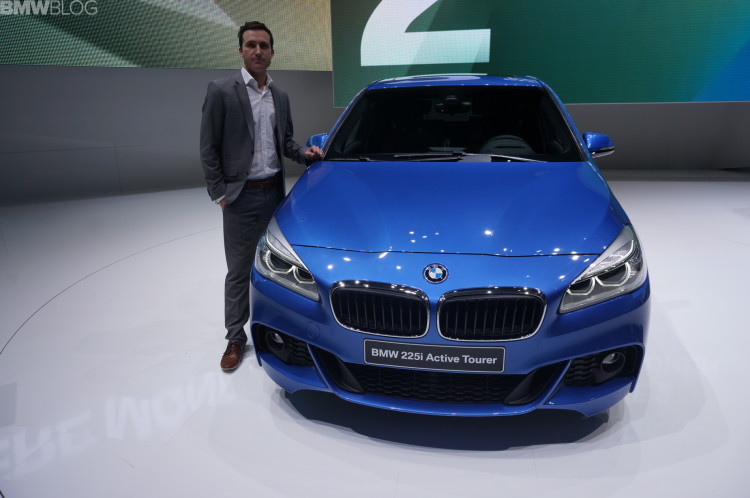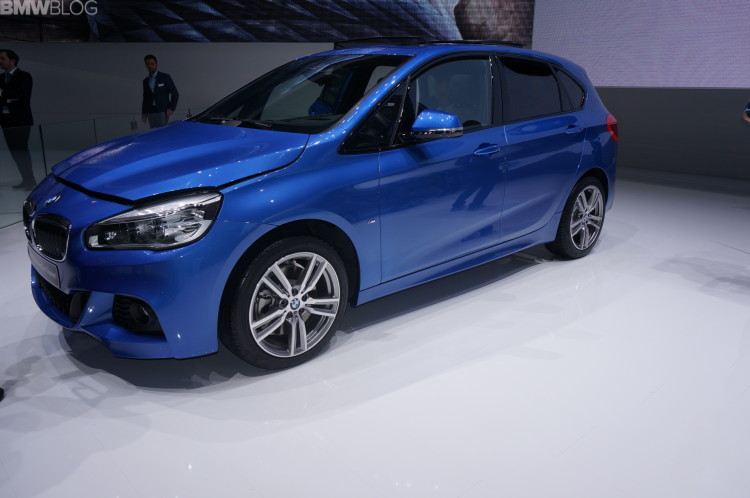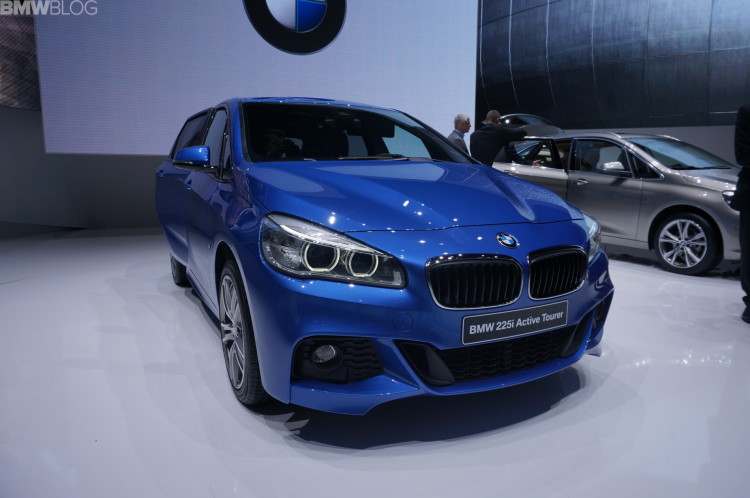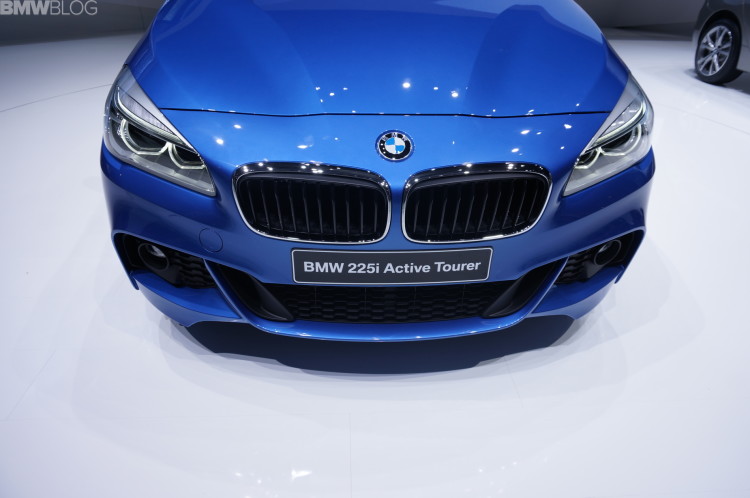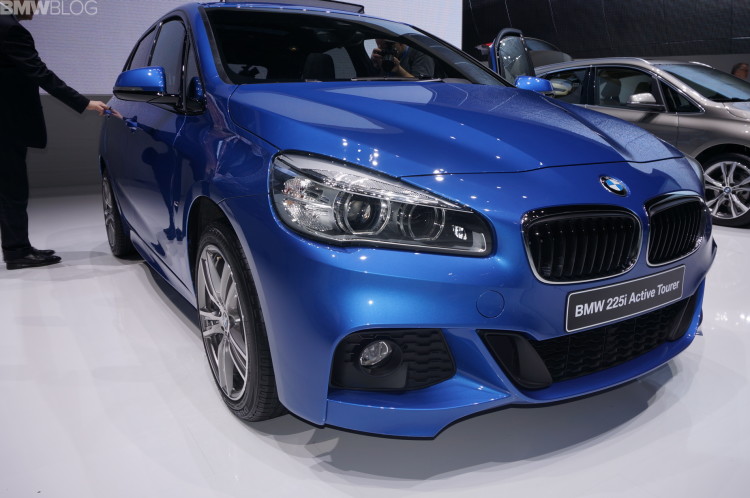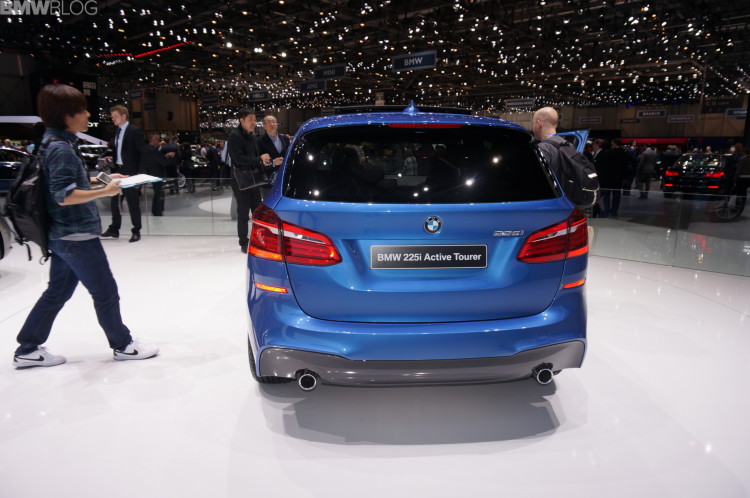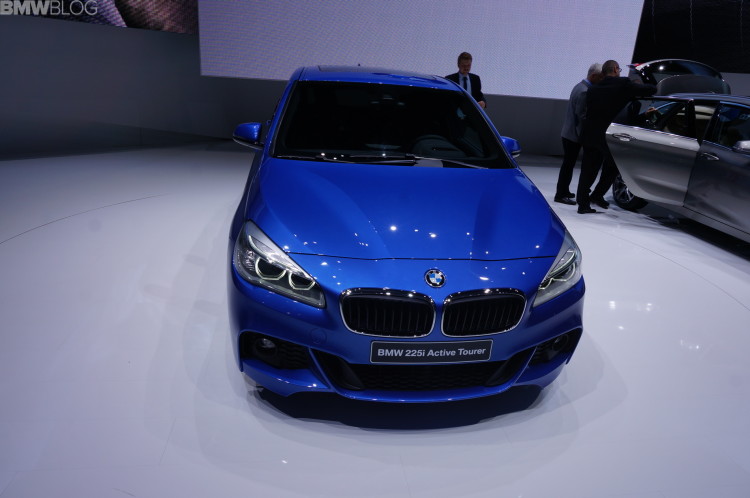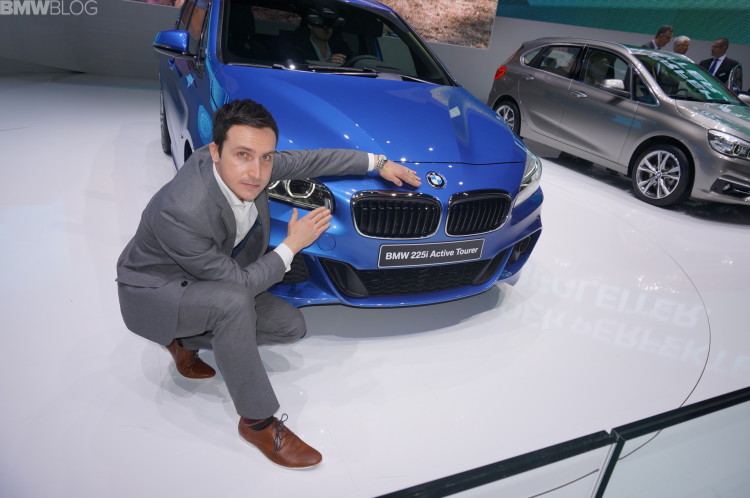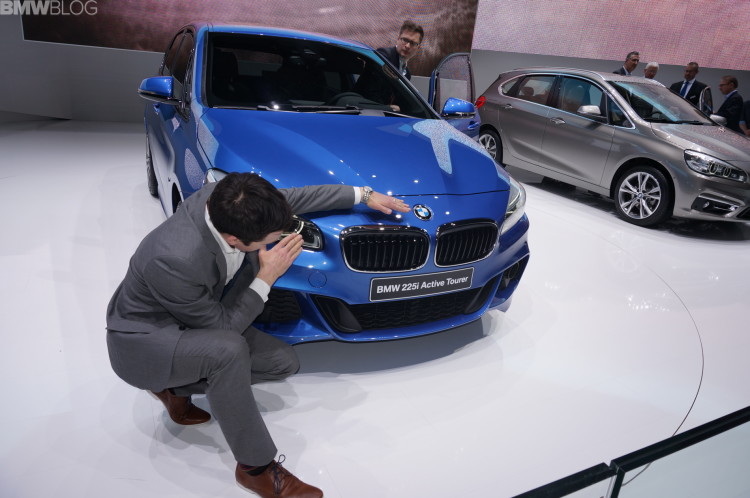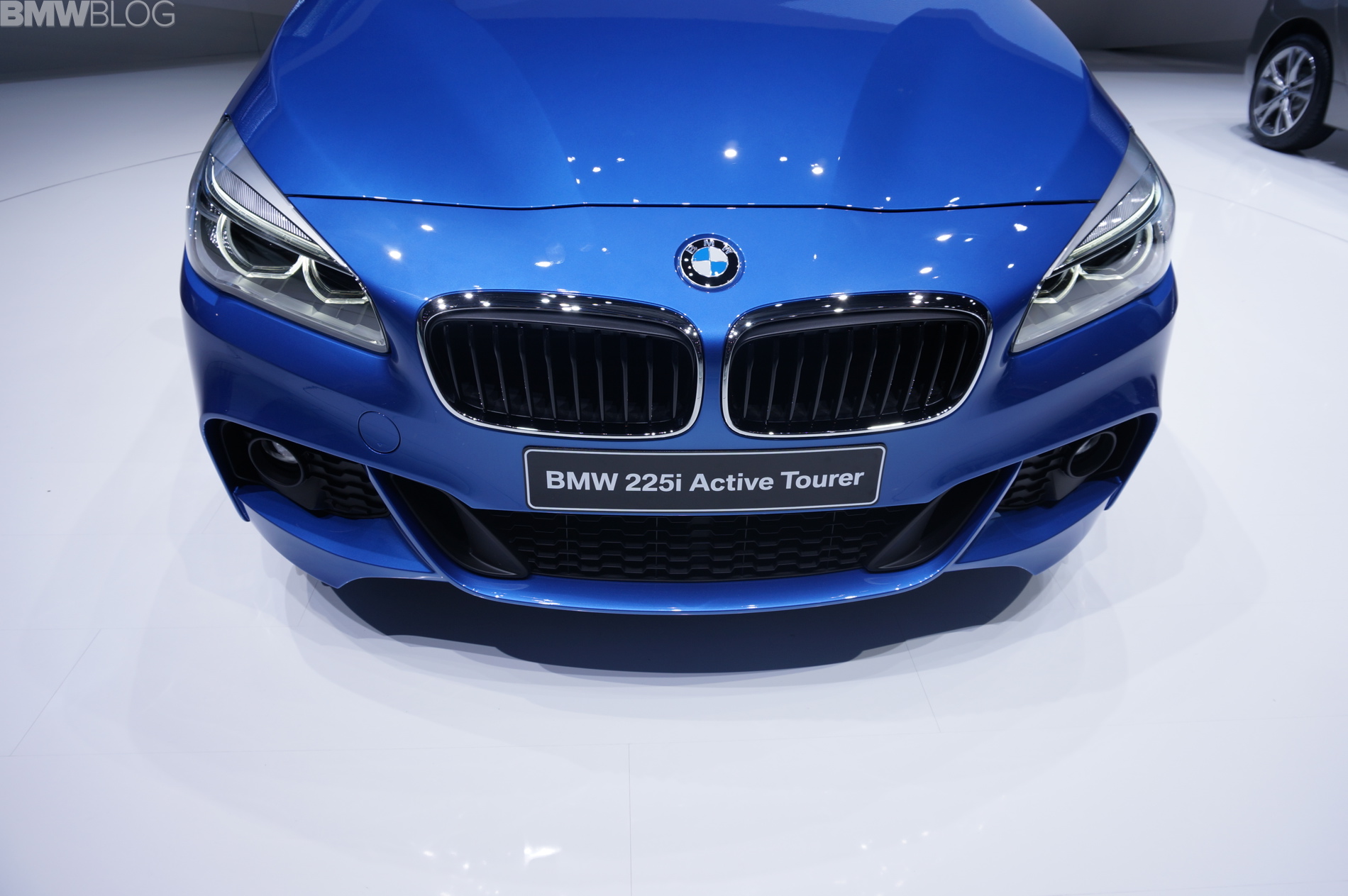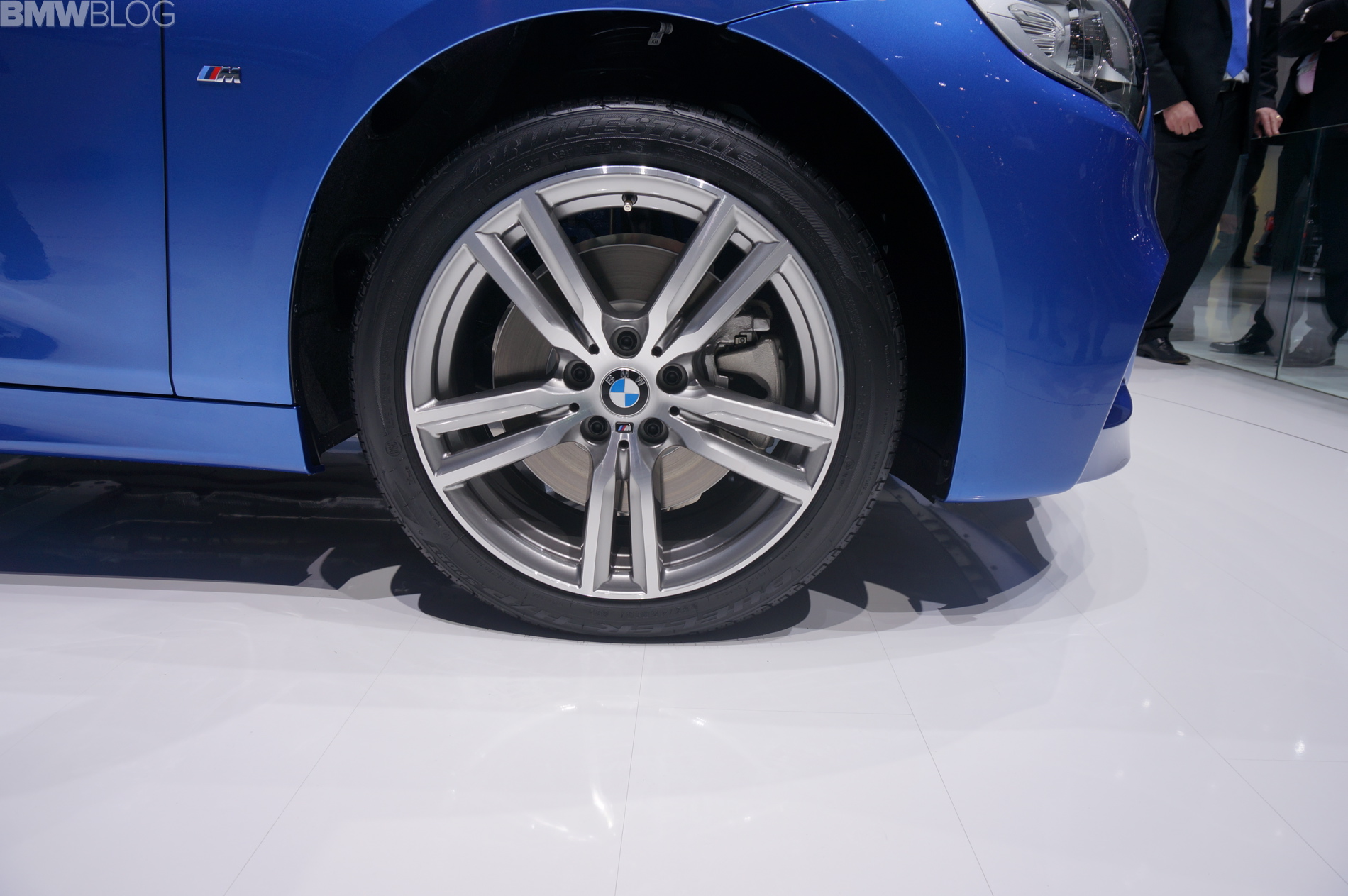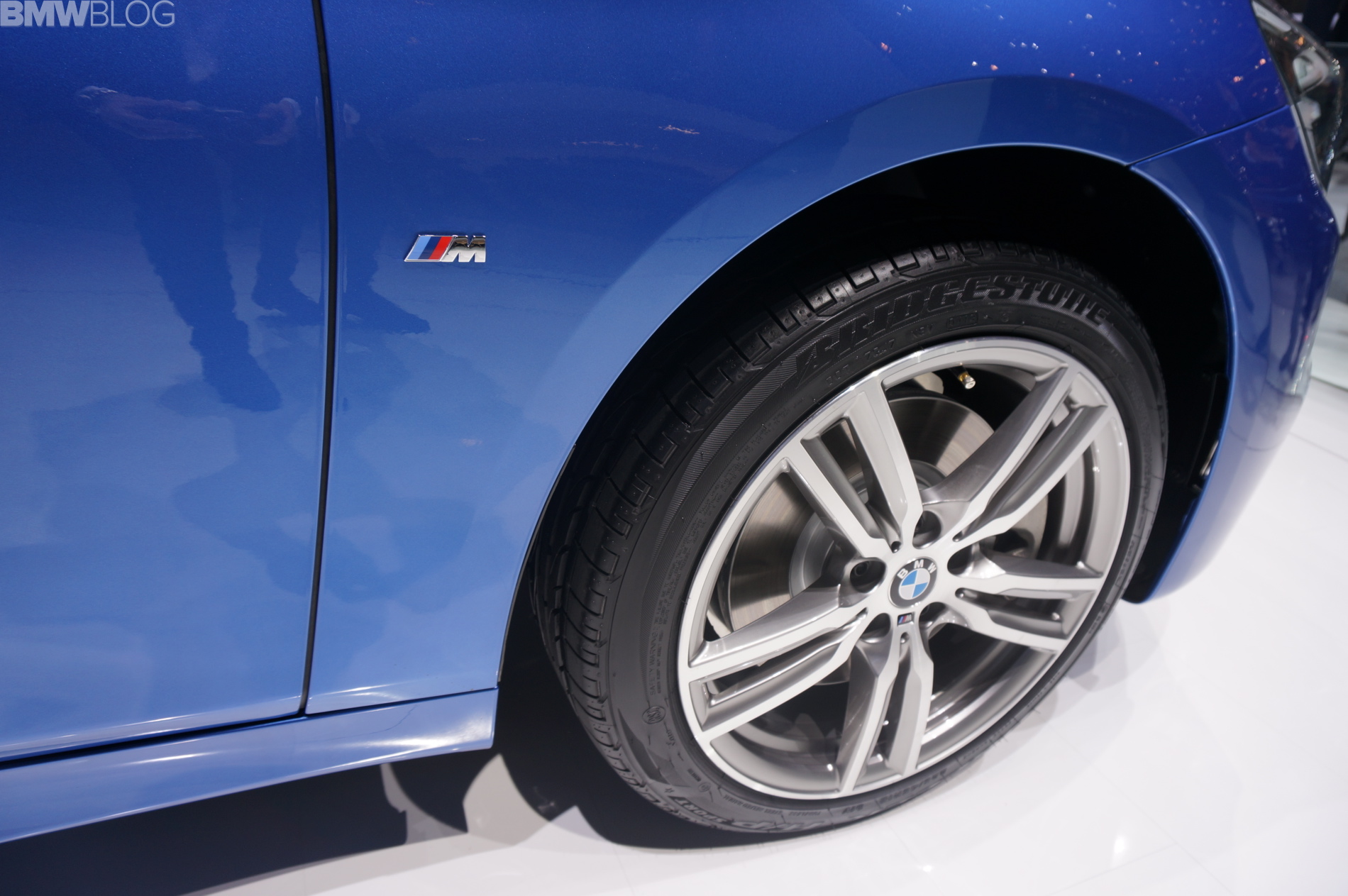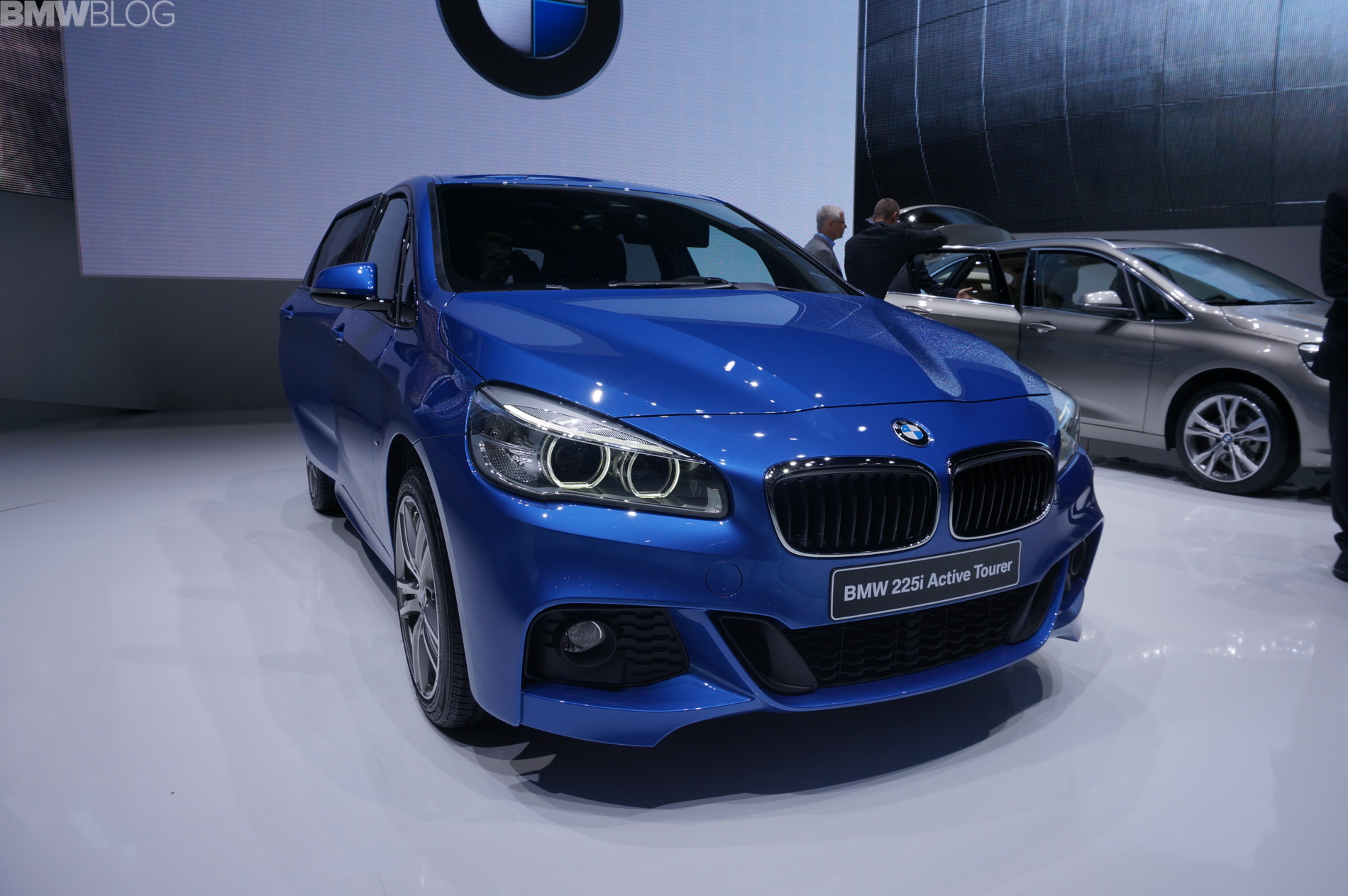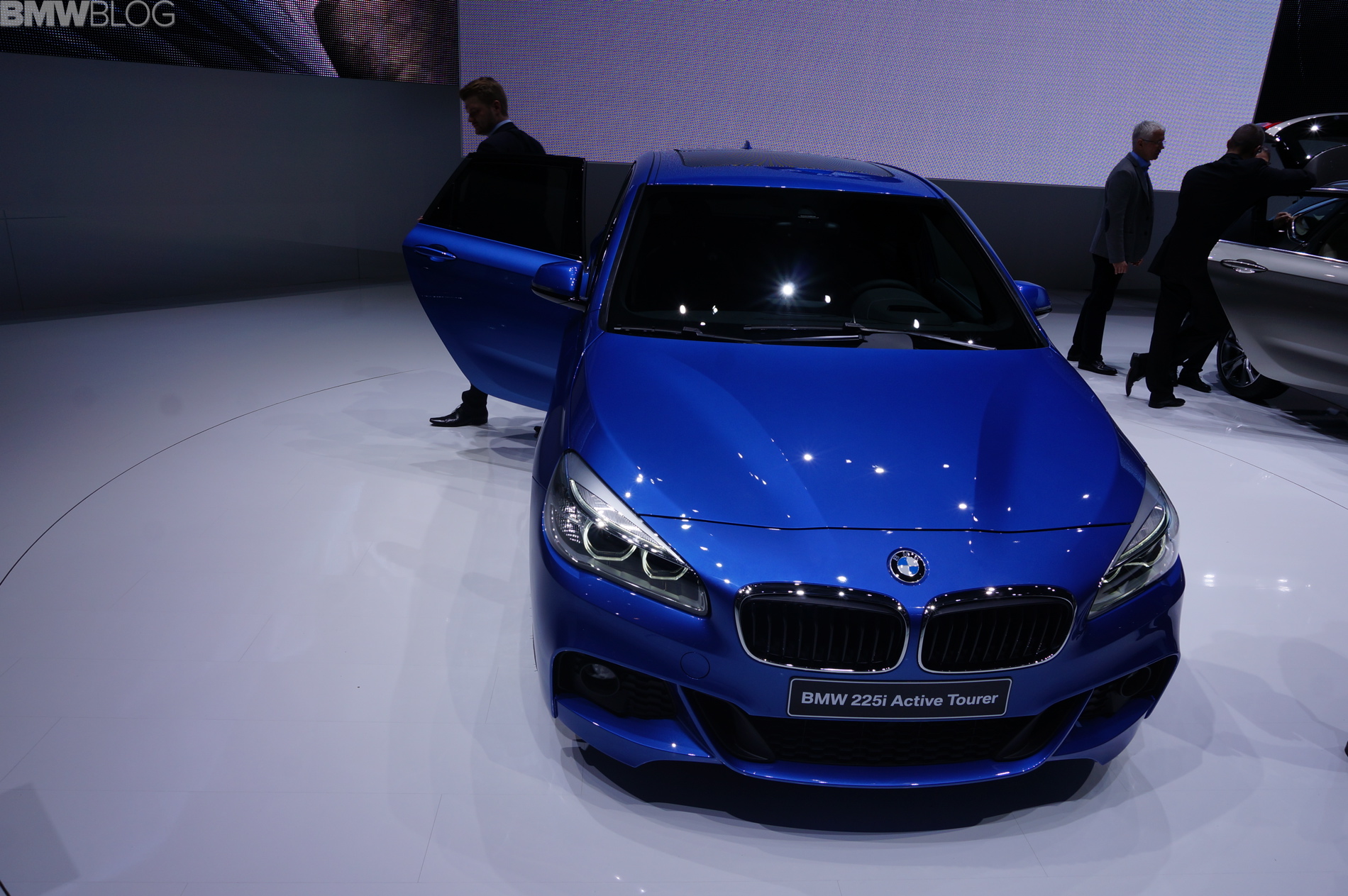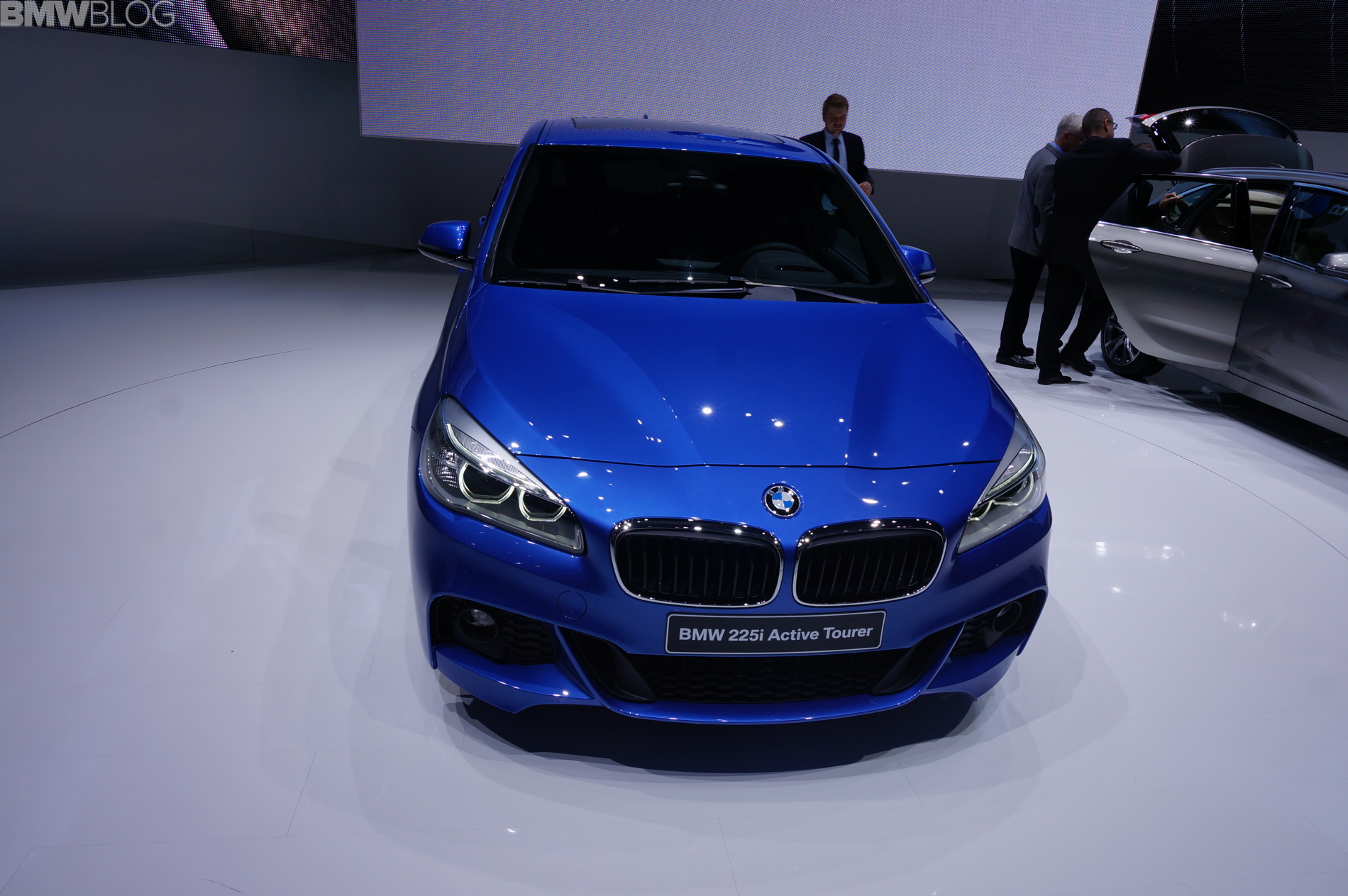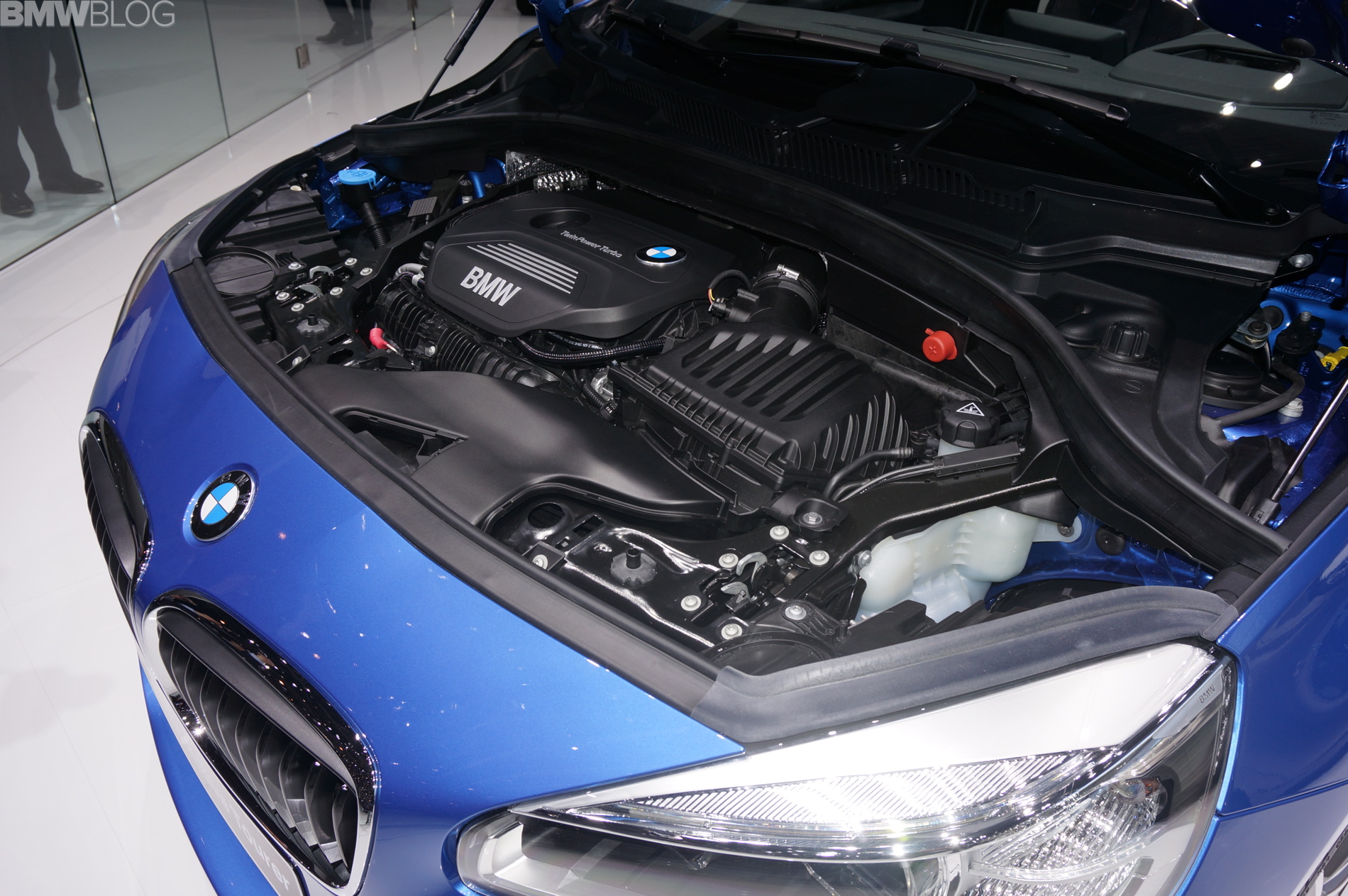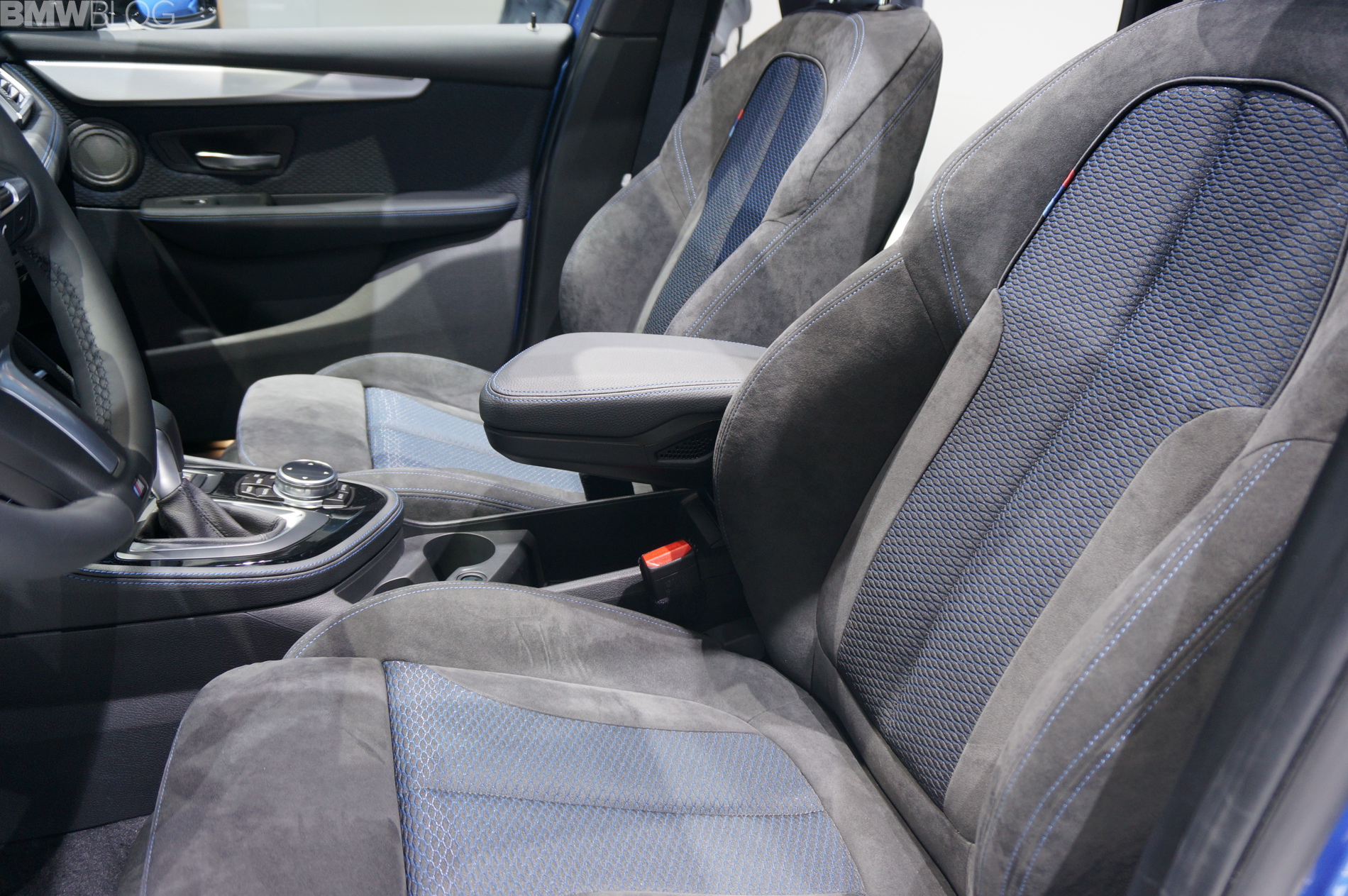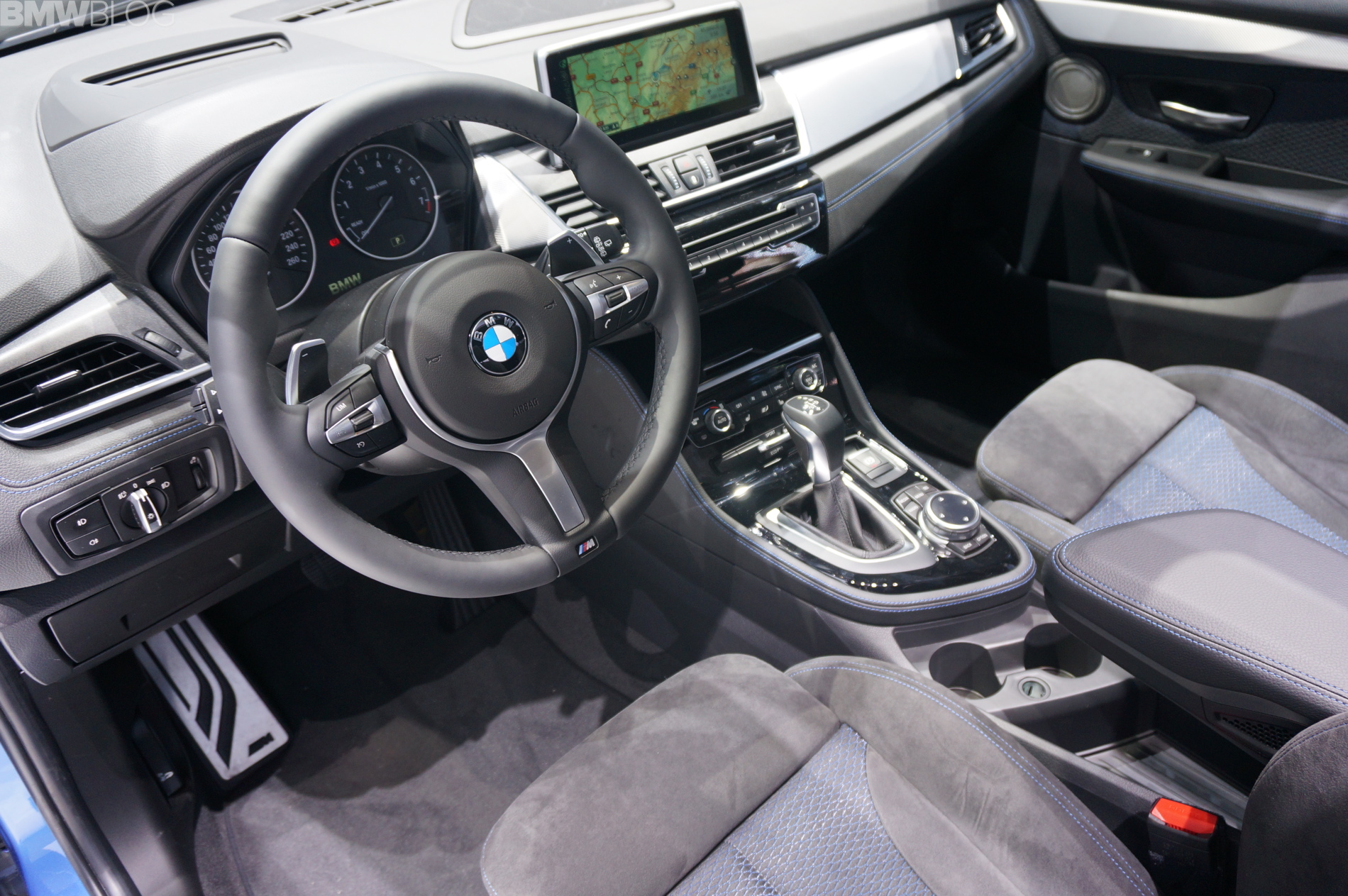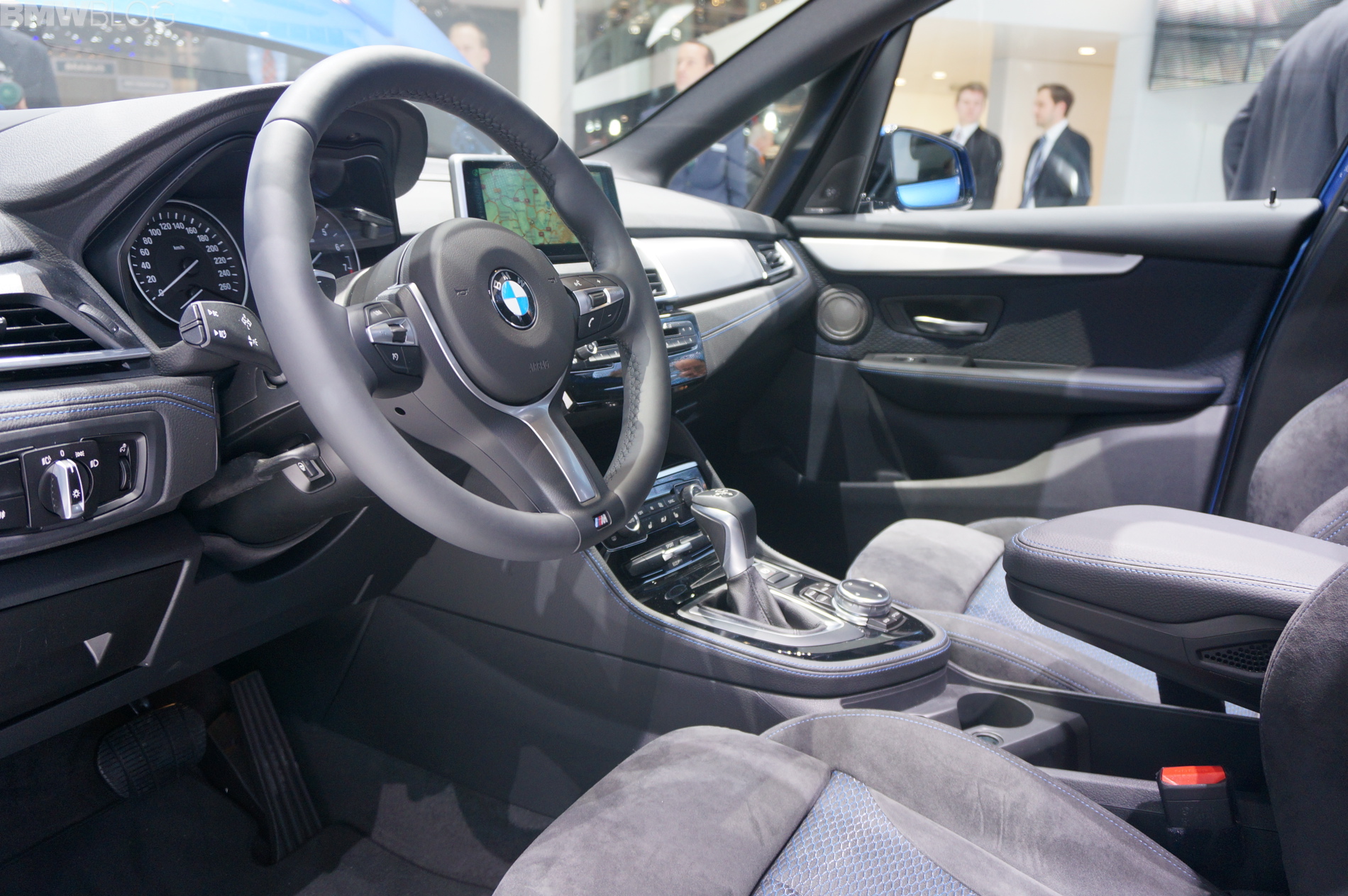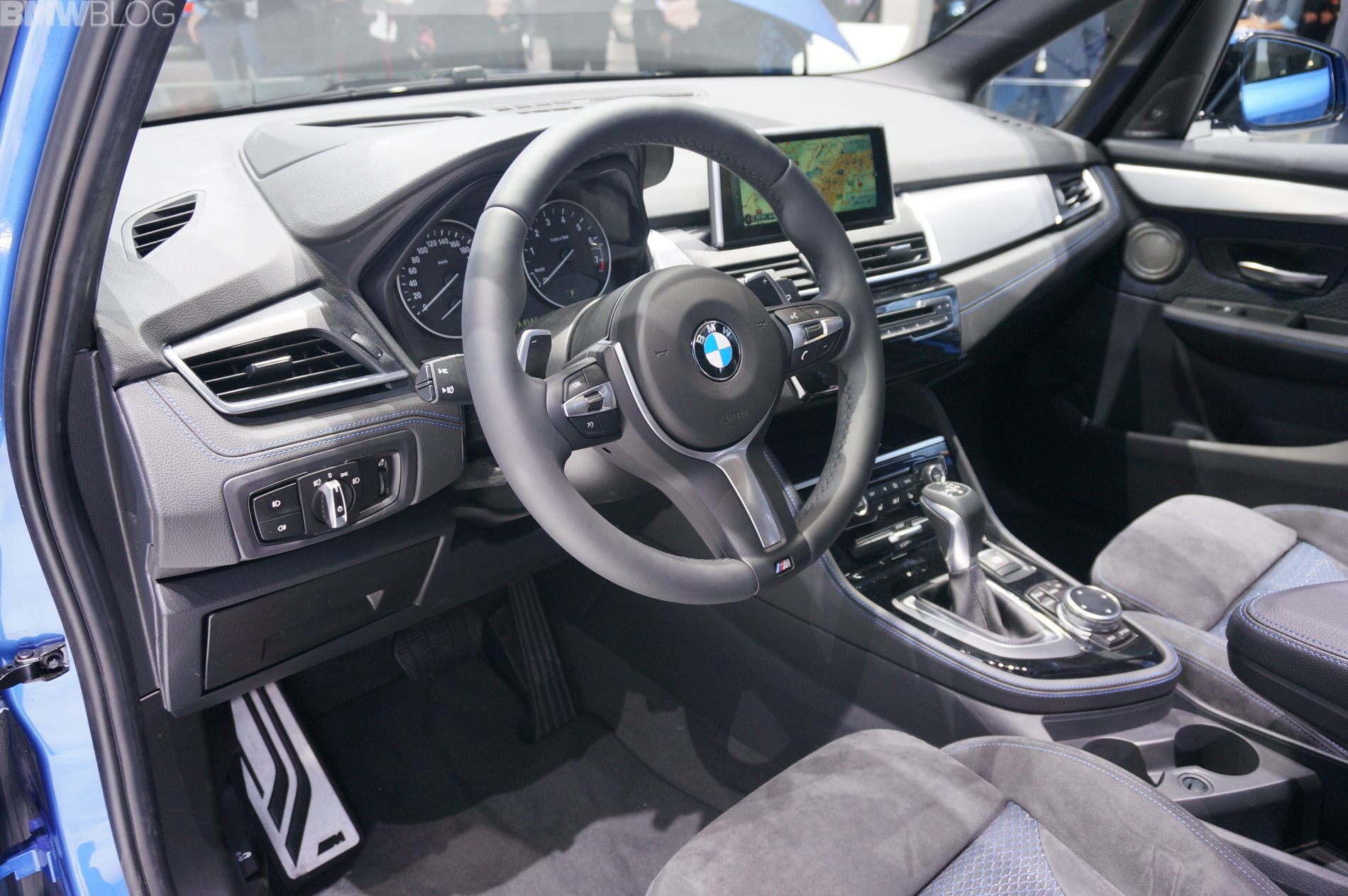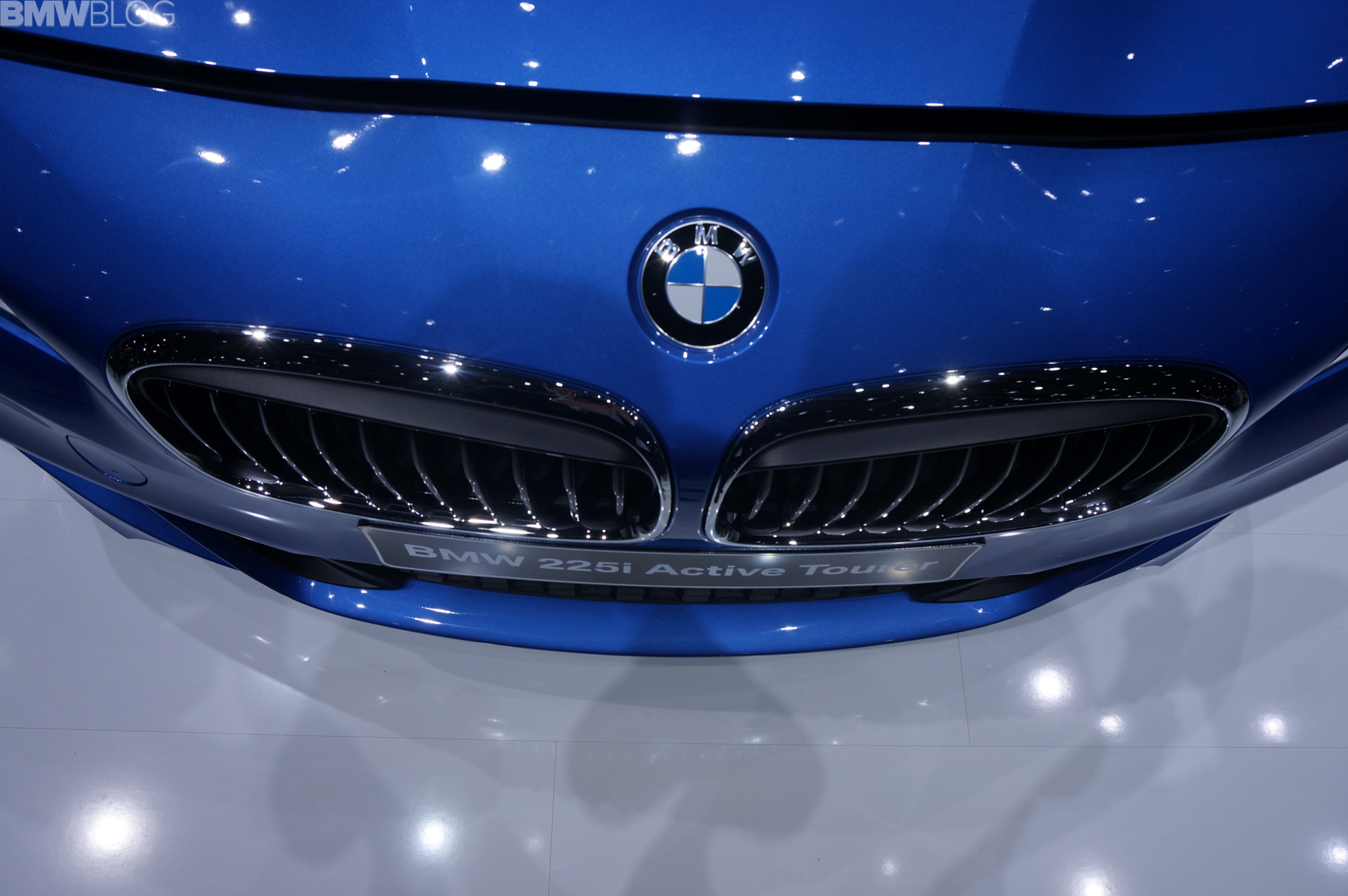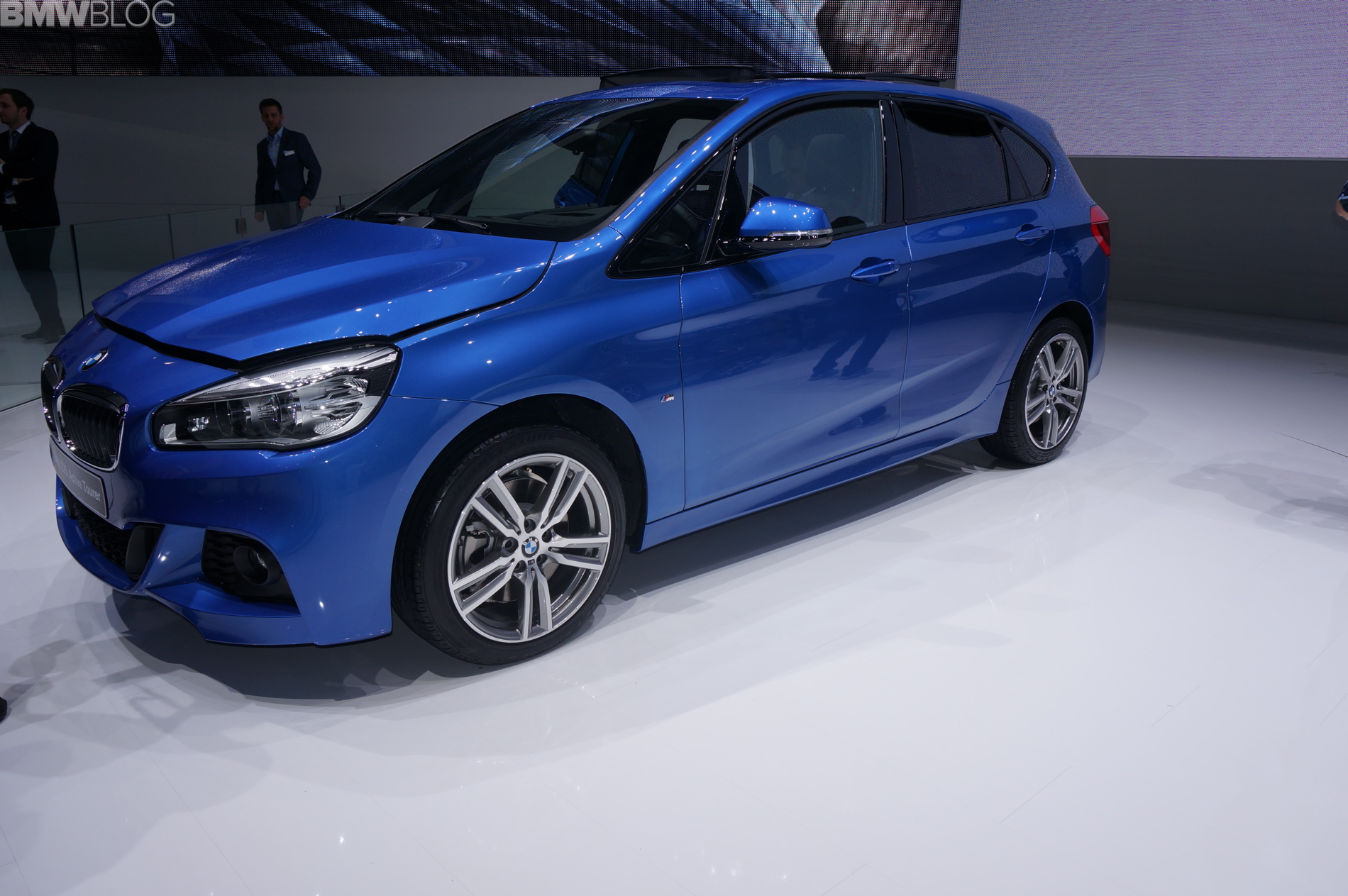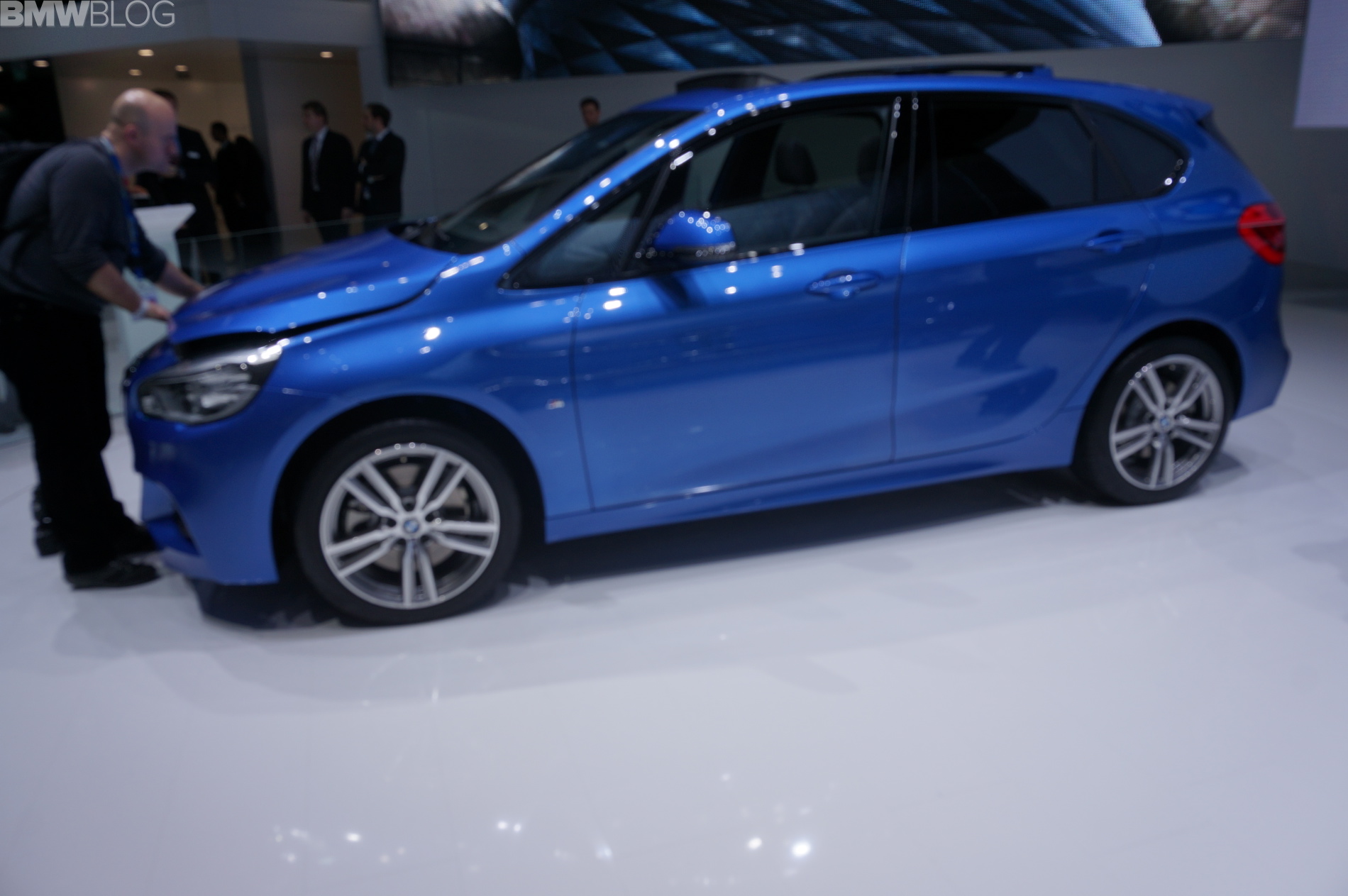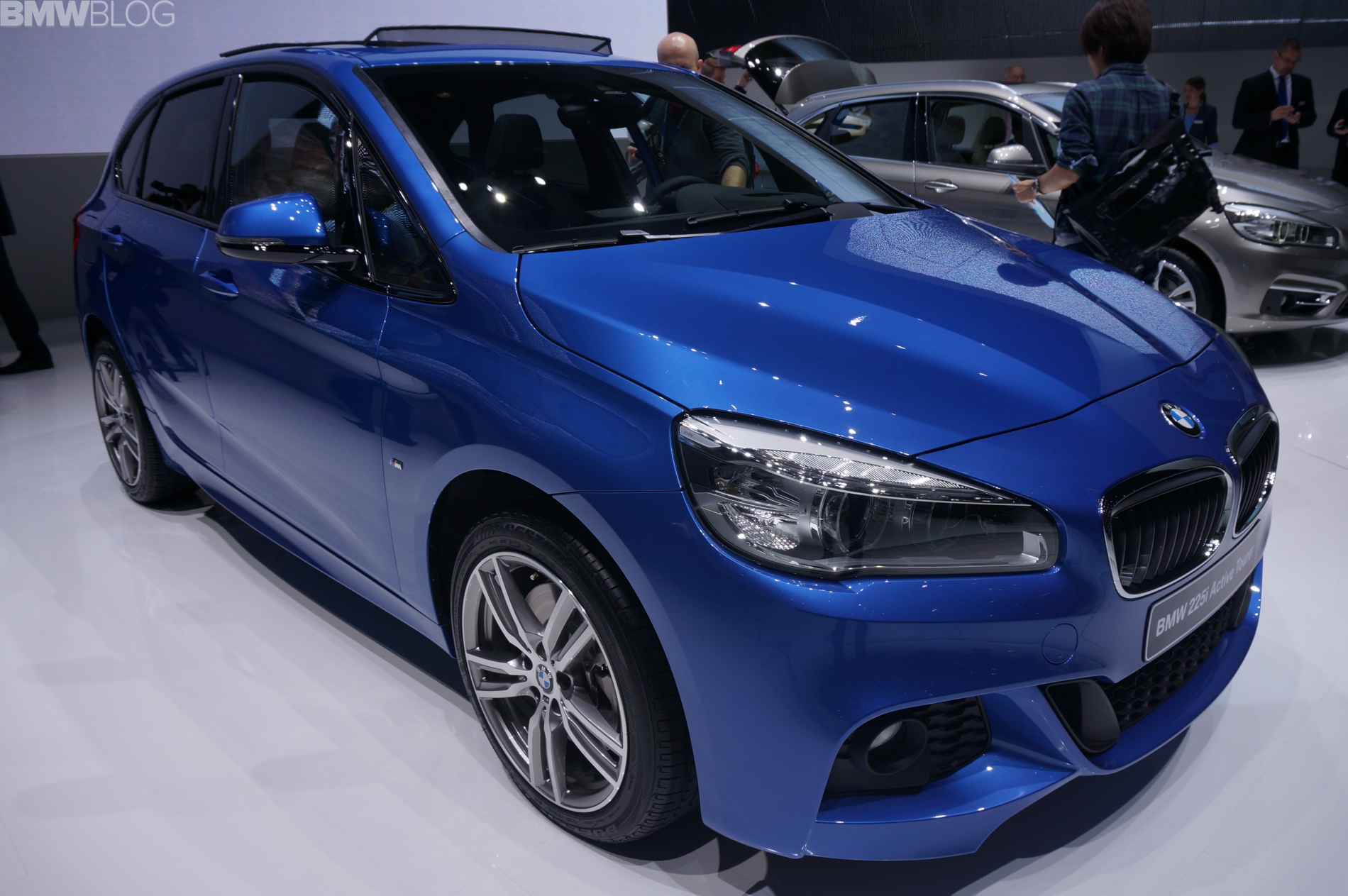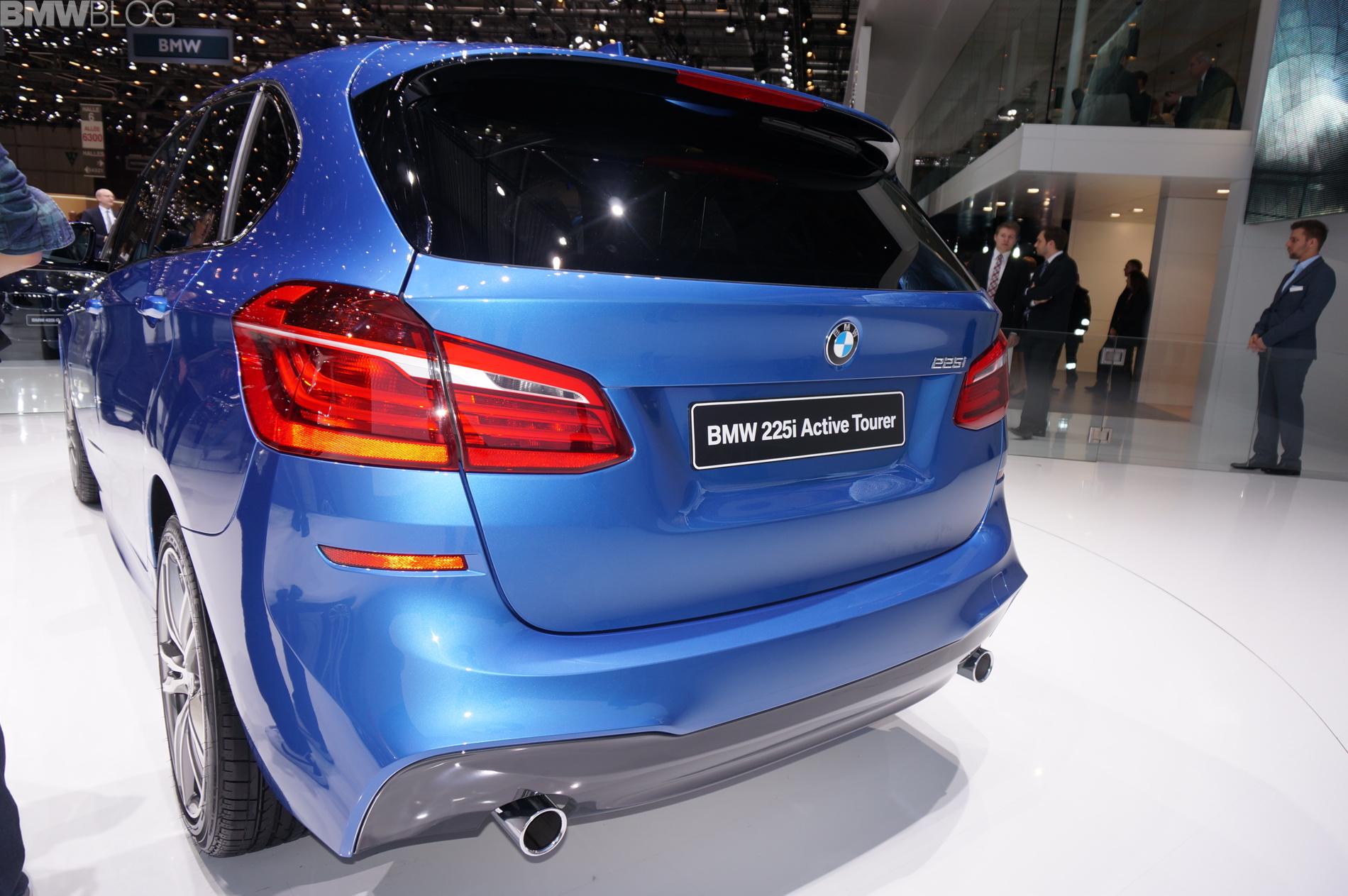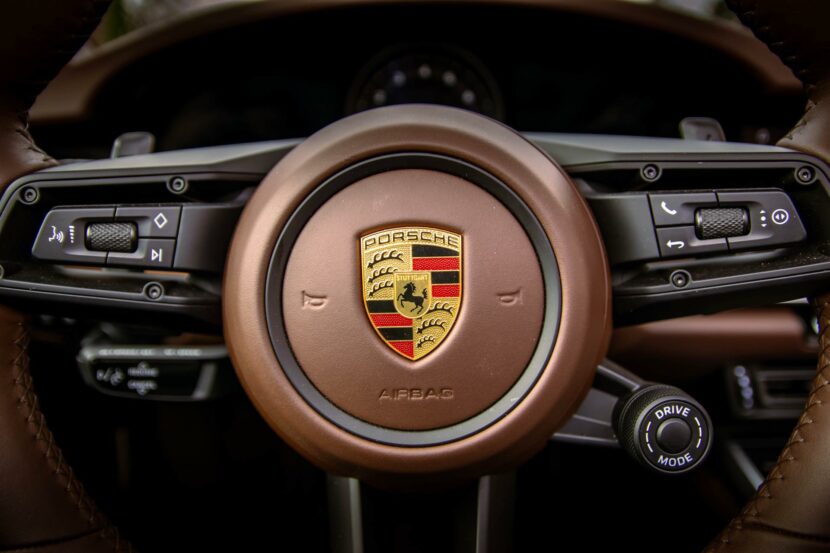At the 2014 Geneva Motor Show, BMWBLOG caught up again with Michael De Bono, the exterior design for BMW’s first front-wheel drive vehicle. We first met with De Bono in 2012 at the Paris Motor Show where BMW unveiled their ActiveTourer Concept. With the production car finally unveiled, De Bono took the time to give us a design overview of the first front-wheel drive BMW.
BMWBLOG: Please describe to us the design of the BMW 2 Series Active Tourer.
Michael de Bono: From a design point of view it was really exciting to work on a 2 Series Active Tourer, as it’s a totally new architecture for BMW front-wheel drive, and also because it demands that we as designers look at the car in a new way. There are totally new proportions, but it’s still clearly BMW.
It was very important to us the designers to make sure that BMW DNA is clear to see, because it’s going to drive like a BMW and should stay clearly a BMW in terms of design. So it wasn’t really a case of totally reinventing the wheel, it was more seeing how we could evolve the BMW design icons like the double kidneys grille and the focused expression of the headlights. We really looked at all the elements of the car and actually how we viewed the car was very different in the design process. We really looked at the car and the three quarters, I really looked at seeing it has that compact feel, to reduce the mass over the wheels visually, and you can really see that this is an agile car. The design communicates that; it’s pretty unique also in the segment by staying true to BMW we’ve also created something new for the segment.
This is the first car in the segment which really has a very emotional design, a dynamic driving experience as well as the functionality. So as a designer that was really the challenge, to get to work with this package and to show a dynamic expression in a different way, rather than stretching the lines and looking at the side-view of the car, how we looked at the car was creating this muscular feel. The car has quite emotional life, there is a lot of expression in the lines, but maybe less lines than on other cars, because it’s a smaller car; then the surfaces themselves are much more muscular, much more athletic – so through the surfacing as well we can enforce what you then see in the lines of the car.
BMWBLOG: What’s the single biggest design challenge to move away from a rear-wheel drive car towards a front-wheel drive car?
Michael de Bono: The biggest challenge was probably in terms of proportions; we’re used to creating dynamic through having very long bonnets, long hoods and then the greenhouse beyond it; and so there is an interplay between the two volumes – or three, with the limousines – traditionally we’re looking at really stretching lines and the length of the cars – big grand gestures across the length of the car. Here with a compact car it’s more one volume, one gesture, so the whole car is more leaning forwards with front-wheel drive car, compared to a rear-wheel drive car, where is more laid-back, more focus on the rear wheels. So the focus is more on the packaging of the car, being very compact.
BMWBLOG: What are the aerodynamics elements that are different on a front-wheel drive car from a rear-wheel drive car?
Michael de Bono: We’re very lucky at BMW to work very closely with aerodynamics and design, and other fields of engineering. We’re working closely with them, saying what we need as designers and with what they tell us as engineers we create the elements, like the aero blades on the rear of the car, which allow the car to have a very dynamic gesture. That actually helps us enforce the dynamic expression of the car – rather than standing up the whole rear-ends, having a very boxy vertical rear-ends, like a tradition van – it can be very sporty and elegant at the same time.
And then we have other elements like the air curtains on the front of the car, we can integrate that into very sporty air intakes, that really lead the eye from the kidneys to the rear and to the corners of the car. Also innovation in the terms of the kidneys themselves, we have a blade running across the top of the kidneys; this helps the airflow over the bonnet of the car and this is an opportunity for us to create innovation as well in terms of design. So there are lots of elements which help us create the car which still keeps the sporty feeling you want to have, but adds up another dimension. There’s no jewelry for the sake of jewelry on this car. It really has a functional role in every aspect of the car.
BMWBLOG: In the end, what’s the purpose of a BMW front-wheel drive car?
Michael de Bono: With the architecture that we have we can really stretch the wheelbase much more than we could traditionally, so we can offer a whole range of different vehicles. BMW presented at Geneva Motor Show the five-seater version; there will be a seven-seater version coming later in the future; with the new architecture we have this flexibility to stretch the wheelbase and offer more flexibility with the package. But basically we started with this car because it shows the flexibility of the whole architecture and this is the all-rounder against these cars that will come.
BMWBLOG: What do you think would be the typical customer for this design?
Michael de Bono: It’s very interesting that on this car there wasn’t really type of customer that like it, it was more like three groups. The young families who live in the city; everyone who lives in the city in the urban environment – it is very important that we address that growth area – but also older couples who want to sit a little higher; the driving is very comfortable on this car, very easy, and also perhaps young freshmen who live and work in the city; they can take the things they need for their job and also on the free time is a car they can use in the city. So 24/7 it’s a car for city life.
BMWBLOG: Again from a designer perspective, will there be an overlap with the X1, when it moves towards front-wheel drives? They are two cars with similar proportions, maybe different inside volume.
Michael de Bono: I think those cars, perhaps in terms of size, positioning, are someway similar, but they both have their own character: X1 is much more about adventure and going outdoors and enjoying the sporty outdoor side of life; with the Active Tourer you have the more flexible side in a very compact package, so this is more centered around urban life, whereas X1 is perhaps centered more on getting out of the city, in the countryside.
So from a basic concept, these two cars have very different characters actually. People are more attached to perhaps one car more than the other, and at BMW every car has its own character – that’s the fun part as a designer, because when we have a new project it really gets the grips with that character of that car. And then the designer wins the project and the designer’s best sketches create the car.
BMWBLOG: If you were to choose some design elements from this car, which ones are you most proud of?
Michael de Bono: This is always a really tough question. I’m really happy with the kidneys and the whole front-end, the way we balanced the elements to create a very sporty impression; there’s a lot of presence for a car in this class, very unique; it fits very well with the overall height of the car, so in that sense of detail I’m pretty happy with the front.
Personally for me the biggest challenge was actually the rear three quarters – the rear-end – because it is very high. And through elements like the air-lights, arrow-shaped lights and the sculpture of the car we found a way to create a very sporty dynamic impression on the rear, and it’s a very new rear-end, it has a lot of new design elements, under the lights and how that leads into the whole rear bumper, the diffuser, the impression around the exhaust area. So it’s a very sporty rear-end; we surely set the bar high with the heights. So again personally for me the biggest challenge was probably the rear, but then of course the front is probably the most detailed part of the car where I’m most happy with one element.
BMWBLOG: Was there a design consideration when looking at the car using a three-cylinder engine versus the four? Did that pose any challenges?
Michael de Bono: When we heard about what the 3-cylinder can do and the characteristics of the engine, it was really exciting for us to hear that there is such a responsive engine already in the base model and this has a lot of future, this engine. And it’s a great engine, totally new, developed from the ground up.
BMWBLOG: Has it changed anything in the design idea of the front-end?
Michael de Bono: Not really. What perhaps has changed is that it has a very compact dimension, so that obviously it had an effect on the interior space and then on the exterior proportions, but this is really a decision very early on to really show what the car can, and not kind of to stress the hood for no reason when there is a small engine and we can play with the compactness, we can make an advantage out of them.
BMWBLOG: Can you tell us a little bit more about the interior design?
Michael de Bono: When you sit in the car in any of the seats you really feel involved and included in the whole experience, and it really has this nice mix of sporty feel and spacious feel inside the car; and focusing on the driving itself, you have a kind of vision theme, where there’s this way of showing drive-orientation without excluding any other passengers. And then we have in terms of styling a layering theme, which really reduces the feel of the whole volume in front of the people sitting in front of the car. So there is a very light, airy feel, then we have some really precise detailing which add some extra level to the whole interior experience. So it’s actually a very new feeling when you sit inside the car, but it still feels like a BMW and you really feel OK.
That’s about driving experience, but we don’t exclude the other passengers in the car.
BMWBLOG: Michael, thank you for your time!


